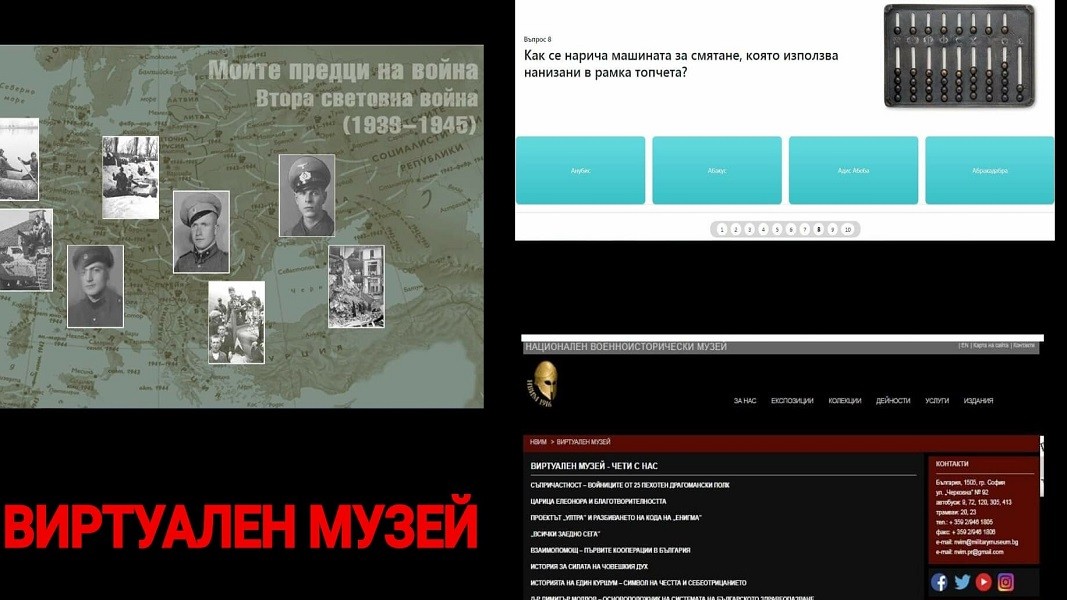Despite changes of the date of celebration over the years, the Day of Bravery and the Bulgarian Army never loses its splendor and solemnity. The respect of Bulgarians for the military remains invariably high today and the sparkling eyes of thousands of people during the traditional military parade on May 6, confirm this every year.
Due to the anti-epidemic measures related to Covid- 19, the parade this year has been canceled. Another site that residents and guests of Sofia often visit during the holiday is the National Museum of Military History. Those wishing to immerse themselves in the glorious past of Bulgarian military will still be able to do it virtually.

The museum has prepared a special program online, available on its website, and on the Facebook page.

Deyana Kostova, director of Museum Marketing, Public Relations and International Affairs has told Radio Bulgaria about an exciting exhibition that is one of the highlights in the program.
 "The first topic we developed online is dedicated to the history and traditions that mark the Day of the Bulgarian Army. Numerous images and various information tell about the holiday from 1885 to the present time,” Ms. Kostova said, adding that the date of the holiday changed a number of times over the years:
"The first topic we developed online is dedicated to the history and traditions that mark the Day of the Bulgarian Army. Numerous images and various information tell about the holiday from 1885 to the present time,” Ms. Kostova said, adding that the date of the holiday changed a number of times over the years:
"A number of photographs have been included, the earliest of which shows the Victory Parade after the Serbo-Bulgarian War, in front of the Holy King Cathedral (Sveti Kral, today’s St. Nedelya) in Sofia in November 1885. This parade started the tradition of celebrating on November 27, the day of the Victory of the Bulgarian Army in the battles at Slivnitsa, as a Day of Military Glory. This was a holiday celebrated until World War I together with April 23 (according to Julian calendar) as a Day of Military Glory. We also show photos of parades that were held during the wars of 1912-1918, as well as during the Second World War. Photographs from the 30s, when celebrated as a Day of Courage and Victory, May 6 was already declared a military holiday and grandiose parades were being realized, are very interesting, too. The exhibition would not have been complete without photographs of the parades after 1993, when by decree of the Council of Ministers on May 6 it was declared Day of Courage and the Bulgarian Army.”
Every year, children are special and most desirable guests of the Museum of Military History. Another initiative aimed at them reveals the history of the Military Order for Courage. It was established by a special decree of Knyaz Alexander I of Battenberg. In violation of the decision of the Berlin Congress of the summer of 1878, which had made forbidden for Bulgaria to have high state honors, the order nevertheless became part of the country's state orders.
Those who are mostly interested in the museum's outdoor exhibit, including a number of military machines that had been in service over the years, are also not forgotten. They will have the opportunity to peek inside from their homes thanks to 360-degree photographs available on the museum's website.
English: Alexander Markov
Photos: @NationalMuseumOfMilitaryHistoryThe attack in the "St. Nedelya" cathedral on April 16, 1925 is the deadliest terrorist act in the history of Bulgaria. It took place on Maundy Thursday and in terms of its brutality and premeditation, it has no analogue. During Holy..
On the day of Holy Wednesday, one of the last events before the saving sufferings for humanity of the Son of God is remembered. In her sincere repentance, a sinner managed to enter the house where Christ was staying and, wishing to testify to her..
Holy Tuesday is a day for teachings and final moral instructions. On this day the priests and the Jews listen for the last time to the teaching words of the Son of God in the temple. There, Jesus Christ gives an example of how to give charity –..
On the second day after Easter begins Bright Week. It is so called because of the light that Christ's Resurrection brings to the world. According to..

+359 2 9336 661
